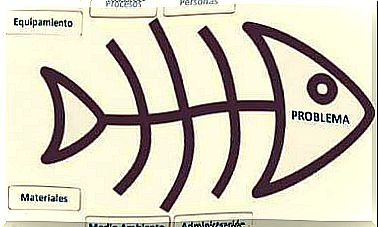Verbal Aikido: A Technique To Defend Against Verbal Attacks

Verbal aikido is a technique inspired by the Japanese martial art: aikido. Aikido was born in modern Japan through a wrestling master named Morihei Ueshiba. It is based on the principle that, in conflict situations, one should seek to neutralize the opponent, transforming the attack energy.
Like all martial arts, aikido is not just a fighting technique. Its philosophy encourages, above all, personal evolution, and its practice involves the physical, mental and spiritual plane. Practitioners do not look down on their opponents, but try to understand them and learn from them. The aim of aikido is to defend and restore balance without harming the aggressor.
Based on these principles, a group of authors began to research their application in communication. In this way, they developed the concept of verbal aikido and found an excellent way to avoid or process daily conflicts. It is exercised to bring more peace, serenity and happiness into our lives. Like any technique, it is something that can be learned, and the greatest benefits are gained with practice.
Verbal Aikido and the Response to Aggression
Verbal aikido practitioners say that when we receive verbal aggression, the main thing is to preserve our own well-being. A verbal attack can trigger a whirlwind of emotions and cloud the mind. That’s why it’s essential to remain calm and focus on the purpose of solving the problem, not increasing it.
We cannot react automatically, but use the strength of the attack to take a turn. This should put us in our aggressor’s shoes and realize where he is looking. Rather than looking at him from the opposite side, the idea is to try to see what that person is looking at. It allows the practitioner to reorient a verbal aggression towards a positive and balanced result.

We will achieve this if, instead of worrying about reacting, we try to listen to the other. Try to understand your point of view. Let’s look at an example of this verbal aikido. Someone launches the following verbal attack: “You perform poorly at work and the bosses still treat you well.” Using the technique of verbal aikido, the answer would be: “It is very frustrating to work well and feel that we are not being given the recognition we deserve. I fully understand your anger.”
In this example, the person avoids arguing with whoever attacked them. Instead, he responds by putting himself in the other’s shoes. This puts the conflict in other terms. Almost always, behind a verbal attack, there is a person who is suffering. Sometimes aggression, even if it’s a dysfunctional form, is also a way of asking for help.
Verbal Aikido Techniques
Verbal aikido considers some specific techniques for coping with an attack. These are mechanisms that have proven to be effective in dealing with these types of situations. They are inspired by martial arts movements.
The main techniques are as follows:
- Consent and give in: is used when the attack does not put us at risk and has become repetitive. The work is more internal and consists in preventing the verbal attack from hurting us.
- Give in and stay in the starting position: This implies acknowledging that in the other person’s exposure there may be some reason, but keep your point of view and tell him so. It is suitable for a mental or intellectual dispute.
- Praise: is used when the disagreement stems from the other’s desire to be superior. Praise nullifies aggressiveness, as it satisfies the aggressor’s desire.
- Disputing: implies responding to the aggression with a question mark. This has two advantages. On the one hand, it allows the other to assess the reasonableness of the attack. On the other hand, it gives you a small amount of time to calm down and not react violently. It is suitable when there are harsh personal offenses.
- Objective verification: consists in letting the other understand that we perceive their discomfort in relation to us. At the same time, we express that we want to resolve the difference through healthy communication: “I understand that you are uncomfortable with my point of view, but I would like to explain why I think so”.
- Confront: is a technique to stop lack of respect or excessive verbal aggression. This corresponds to something like: “I may have made a mistake, but you have no right to treat me this way. Therefore, I demand an apology”.
- Moderate the tone of voice: In this case, we need to demonstrate to each other that there was an offense and that we are not going to admit it. It is equivalent to: “If you continue to talk to me in these terms (or in that tone), we will end this conversation here.”

Finally, what verbal aikido seeks is intelligent conflict management. Not wasting energy on what’s not worth it and spending only on what’s necessary. Ideally, learn to count to 10 so you don’t overreact, and then apply some of these effective techniques. Learn to apply the teachings of this Japanese martial art to your personal crises and conflicts and significantly improve your professional and personal relationships.









